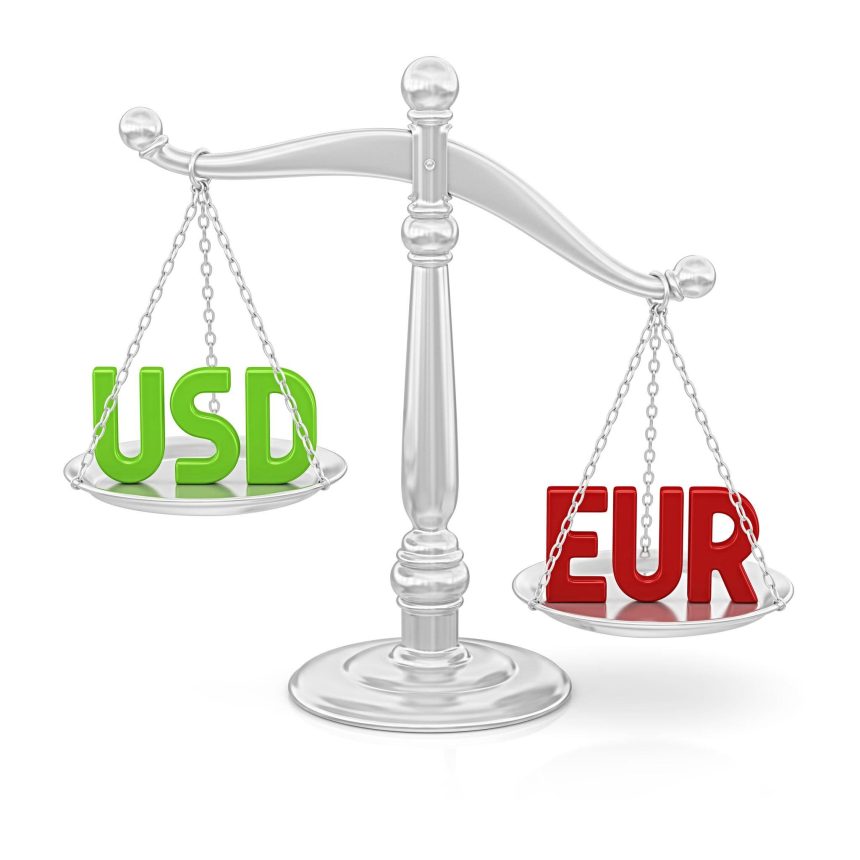EURUSD Recovers Despite Trump’s Tariff Threats on the Eurozone and Canada.
The EURUSD currency pair has rebounded to around 1.0780 in Thursday’s European trading session, marking a shift after a six-day losing streak. This recovery comes despite heightened global trade tensions, particularly due to former U.S. President Donald Trump’s announcement of a 25% tariff on all automobile and auto-component imports, set to take effect on April 2. While the US Dollar Index (DXY) has recently touched a three-week high of 104.65, it is now correcting, giving the euro some breathing room.
This market movement highlights the complex interplay between currency fluctuations, inflation risks, and central bank policies. While the tariffs intended to protect U.S. industries, they could also fuel inflation, disrupt global supply chains, and create economic headwinds. Investors are now turning their attention to Friday’s release of the US Personal Consumption Expenditures (PCE) inflation data, a key indicator that could influence Federal Reserve policy in the coming months.
The Impact of Trump’s Tariffs on the Market.
Trump’s decision to impose large-scale tariffs on auto imports has sent shockwaves through financial markets, particularly in Europe and Canada. His recent post on Truth Social stated:
> “If the European Union (EU) works with Canada in order to do economic harm to the USA, large-scale tariffs, far larger than currently planned, will be placed on them both in order to protect the best friend that each of those two countries has ever had.”
This statement has sparked fears of a full-blown trade war, reminiscent of the U.S.-China tariff disputes during his presidency. A trade conflict of this scale could negatively affect economic growth on both sides of the Atlantic, further complicating the European Central Bank’s (ECB) monetary policy decisions.
The immediate consequences of these tariffs include:
1. Higher Inflation: The cost of imported automobiles and auto components will rise, which will likely be passed on to American consumers, increasing inflationary pressures.
2. Economic Slowdown in Europe: Germany, which exports around 13% of its total auto production to the U.S., will be one of the hardest-hit economies.
3. Supply Chain Disruptions: Automakers may need to adjust their supply chains, potentially leading to production delays and price hikes.
The Fed’s Dilemma: Inflation vs. Economic Growth
The Federal Reserve now caught between two opposing forces:
Inflationary pressures from tariffs: Higher import costs could push inflation above the Fed’s 2% target, delaying any potential rate cuts.
Slower economic growth: If trade tensions escalate, businesses may scale back investments, weakening the U.S. economy.
Minneapolis Fed President Neel Kashkari acknowledged this challenge in a recent speech at the Detroit Lakes Chamber Economic Summit, stating that the opposing forces of inflation and economic slowdown are “kind of a wash.”
According to the CME FedWatch Tool, there is almost certainty that the Fed will keep rates steady in its May policy meeting (4.25%-4.50%), but there is now a 65.5% probability of a rate cut in June. This suggests that while inflation remains a concern, markets are betting that economic risks will eventually force the Fed to ease its policy stance.
Upcoming PCE Inflation Data: A Key Market Driver
One of the most significant market-moving events this week will be the release of the US Personal Consumption Expenditures (PCE) Price Index data for February on Friday. This is the Fed’s preferred inflation gauge, making it a critical factor in shaping expectations for future interest rate decisions.
Market Expectations:
Core PCE inflation (excluding food and energy) is expected to rise 2.7% YoY, compared to 2.6% in January.
A higher-than-expected reading could push the USD higher, as it may reduce the likelihood of rate cuts.
A lower-than-expected reading could weaken the USD, reinforcing expectations for a June rate cut and supporting EURUSD.
The EURUSD Fragile Outlook Amid Trade Uncertainty.
While the euro has gained ground against the U.S. dollar in recent trading sessions, its outlook remains uncertain due to multiple economic risks.
1. ECB Policy and Rate Cut Expectations
ECB policymaker and Belgian central bank Governor Pierre Wunsch weighed in on the tariff situation in an interview with CNBC, stating that such trade barriers could hurt economic growth and contribute to inflationary pressures. While he did not indicate an immediate rate hike, he emphasized that inflation risks are tilted to the upside.
Traders, however, believe that the ECB may cut rates in April to cushion the Eurozone from economic risks stemming from the U.S. trade war and slowing domestic demand. If the ECB moves ahead with rate cuts while the Fed holds rates steady, the yield differential would favor the U.S. dollar, keeping EUR/USD under pressure.
2. Germany’s Vulnerability to Tariffs
Germany’s economy is particularly vulnerable to Trump’s 25% auto tariffs, as the U.S. is a key export market for German automakers. A decline in demand for German cars in the U.S. could further worsen the country’s already weak economic outlook.
Germany, often seen as the economic engine of the Eurozone, has been struggling with sluggish growth and high energy prices following the Russia-Ukraine conflict. Any additional trade barriers could push the economy toward recession, which would be bearish for the euro.
What’s Next for EURUSD?
Several key factors will determine the short-term and long-term trajectory of EUR/USD:
1. US PCE Inflation Data (March 29, 2025): A higher reading could strengthen the USD, while a lower figure could support the euro.
2. Fed’s Policy Meeting (May 2025): Any indications of rate cuts could weaken the USD and push EURUSD higher.
3. ECB’s April Policy Decision: If the ECB signals rate cuts, EUR/USD could face downward pressure.
4. Further Trade War Developments: If Trump follows through with additional tariffs beyond autos, it could create more volatility in the forex market.
Conclusion: Will Trump’s Tariff War Strengthen or Weaken the USD?
Trump’s aggressive trade policies have introduced new uncertainty into global markets. While his tariffs designed to protect American industries, they could also hurt the U.S. economy by driving inflation higher and straining international trade relations.
In the short term, the US dollar may remain supported due to risk aversion and the Fed’s cautious stance. However, if inflationary pressures rise too sharply, the Fed might be force to act, either by maintaining higher rates for longer or eventually cutting them to counter economic slowdown risks.
For the euro, continued economic weakness in the Eurozone, ECB rate cut expectations, and the impact of U.S. tariffs pose significant challenges. While EURUSD rebounded, the broader trend remains uncertain, and further downside risks could emerge if trade tensions escalate.
What do you think? Will Trump’s tariffs ultimately boost the USD, or will they lead to economic uncertainty that weakens it in the long run?









